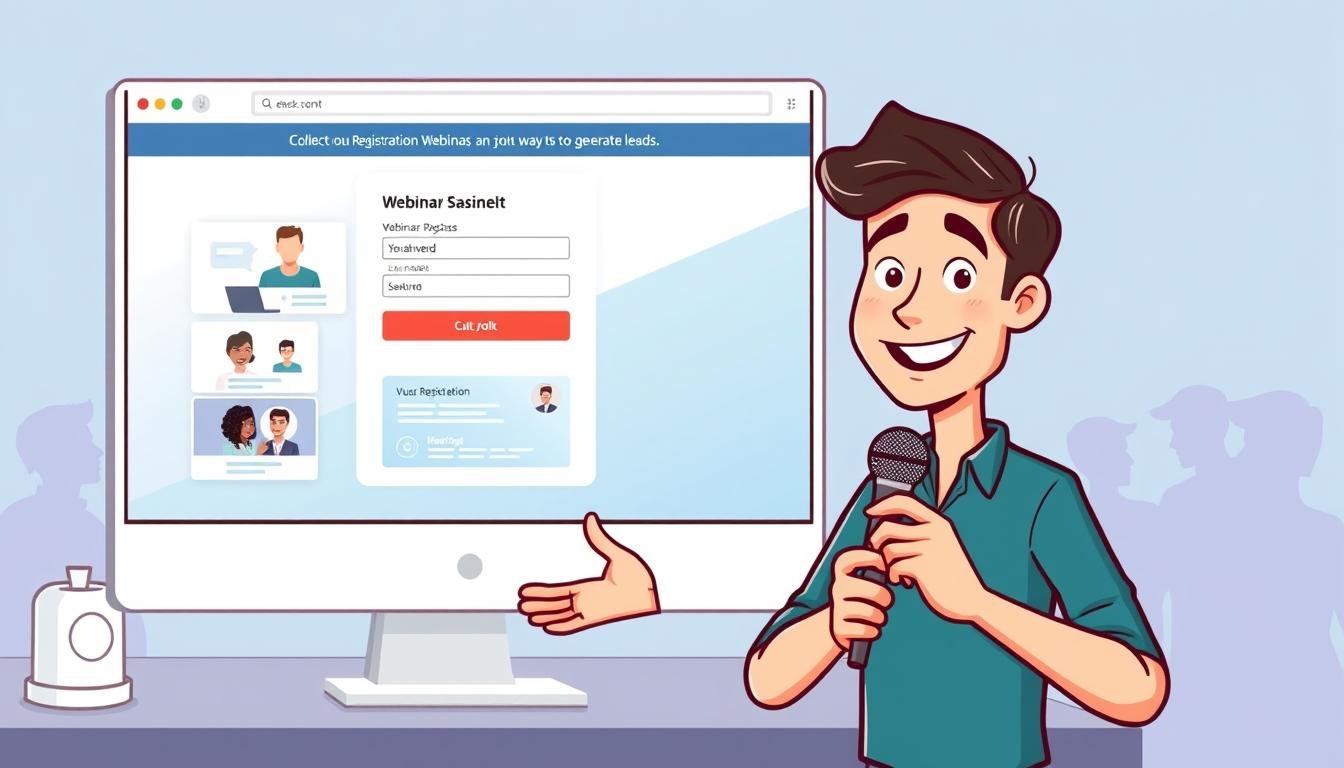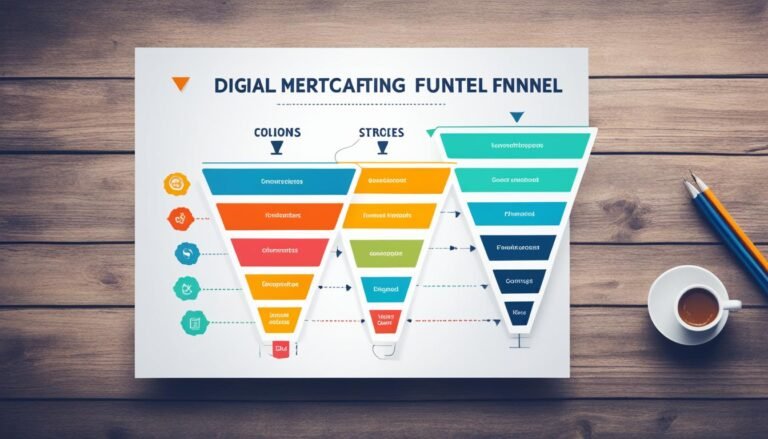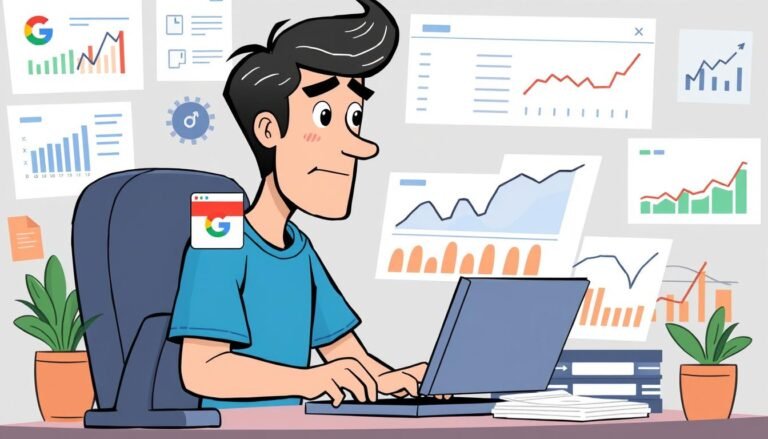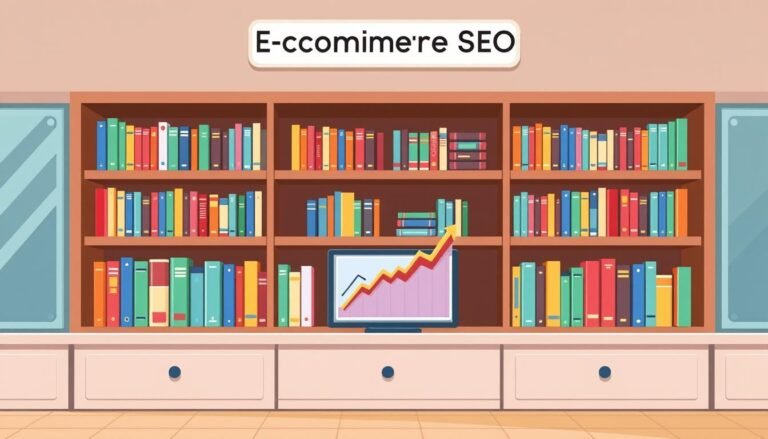How to Use Webinars for Lead Generation
Did you know that over half of marketers host up to 50 webinars every year? Some even do as many as 150. This shows how important webinars are for lead generation, especially for B2B marketers. In fact, 73% of B2B marketers think webinars are their best way to get quality leads.
Webinars help you connect with potential customers in real time. They let you share valuable content that builds trust and authority. Plus, you can use recorded webinars to keep attracting leads even after the event is over.
This article will show you how to use webinars for lead generation. We’ll cover the best webinar platforms and tools, and share strategies that work well with your audience.
Key Takeaways
- Over half of marketers conduct numerous webinars each year, proving their effectiveness.
- 73% of B2B marketers consider webinars a critical strategy for generating quality leads.
- Engaging formats, such as Q&A sessions, are preferred by 92% of attendees.
- Webinars can continue capturing leads for over 30 days post-event.
- Utilizing attendee data for follow-ups enhances targeted lead nurturing strategies.
- Webinars are a cost-effective alternative to traditional marketing methods like trade shows.
Why Webinars Are Effective for Lead Generation
Webinars are key for generating leads by mixing engaging content with personal interaction. They help businesses draw in a focused audience interested in their field. This leads to a higher number of conversions. Studies reveal that 73% of B2B marketers see webinars as crucial for getting high-quality leads.
Webinars create a perfect setting for real-time interaction. This helps build stronger connections between brands and potential customers.
Understanding the Role of Webinars in B2B Marketing
Webinars can reach a broad audience without limits by location. This helps companies grow their market reach and attract leads from around the world. They can host sessions that speak to potential customers, solve their problems, and show their expertise.
Educational webinars tend to do better than those focused on products. They offer more value and leave a lasting impact. Adding soft sales pitches at the end of these sessions can lead to higher conversion rates.
Building Trust and Authority Through Informational Content
Working with other companies for webinars can greatly increase lead generation. Using well-designed landing pages with strong calls to action helps convert more visitors. Simple sign-up forms and positive feedback from others build trust.
Following up with leads through email and social media keeps them engaged. This helps move leads closer to making a purchase. By sorting leads based on their webinar engagement, companies can focus on the most promising ones.
Having a webinar library on a company’s site keeps people coming back. Studies show that visuals make presentations 43% more convincing. With 55% of people who sign up showing up and 2% to 5% buying something, the data highlights the power of good content.
With a solid plan for webinar marketing, companies can build trust and authority. This leads to more conversions.
How to Use Webinars for Lead Generation
To make webinars work well for lead generation, set clear goals and know what you want to achieve from the start. This helps guide everything from planning to the final event. You should decide on metrics like how many people will sign up, how engaged they’ll be, and how many will turn into leads.
Setting Clear Objectives and Success Metrics
Objectives should match your marketing goals and show what success means for lead generation. Platforms like Zoom and GoToWebinar help track important performance. Many marketers see a lead conversion rate of 20% to 40% from webinars. Knowing what success looks like helps shape your strategy.
Identifying Your Target Audience for Better Engagement
Knowing who your audience is helps make content they’ll care about. Tools for research can help pinpoint the perfect buyer persona, including demographics and buying habits. Making content that speaks to their needs can boost engagement a lot. Looking at successful webinars shows how important it is to tailor your message.
Using feedback from after the webinar can make future ones better. By looking at what attendees liked and didn’t like, you can target better and get higher-quality leads. Focusing on these areas lets businesses use webinars fully for lead generation.
Webinar Marketing Strategies to Attract Attendees
Getting people to attend your webinars takes careful planning and promotion. Using the right marketing strategies can help you reach more people. Here are some ways to get more people to come and stay engaged.
Utilizing Email Campaigns and Social Media Promotions
Emails are key for getting people to sign up. Sending out personalized invites that show why your webinar is worth it can really get people interested. Studies show that promoting your webinars four weeks ahead can increase sign-ups by up to 12%.
Also, social media is crucial for getting the word out. Posting regularly and using targeted ads can help you reach more people. Tuesdays are a good day to get people to register, with most sign-ups happening from Monday to Wednesday.
Co-hosting with Industry Experts to Expand Reach
Working with industry experts can make your webinar more credible and reach more people. It uses the expert’s audience and links your brand with authority. Partnering with well-known figures in your field can draw in new attendees, boosting your event’s visibility.
Creating Engaging Webinar Content
Creating great content for webinars is key to getting people to join and meet lead goals. It’s important to pick topics that speak to what your audience cares about. Using audience engagement techniques makes the experience better and makes sure the info is useful and doable.
Choosing Relevant Topics That Address Audience Pain Points
Picking the right topics is the first step in making a successful webinar content creation. Do your homework to understand what your audience is struggling with. Here are some tips:
- Use surveys or polls to gather input from potential attendees.
- Analyze trends in your industry to identify pressing concerns.
- Review FAQs from customers for recurring themes.
These methods help you choose the right content and get your audience excited from the start. It sets the stage for lead nurturing through webinars.
Incorporating Interactive Elements for Audience Participation
Being interactive doesn’t end with the presentation. Adding interactive parts keeps the audience’s attention and gets them involved. Think about adding:
- Live polls to encourage instant feedback.
- Q&A sessions for real-time queries and discussions.
- Resource downloads post-webinar to extend value beyond the event.
Using these elements boosts connection with the audience and gives you insights into what they like. This helps you make better webinar content creation. Knowing what your audience wants helps you improve your lead nurturing through webinars.
| Engagement Technique | Description | Benefits |
|---|---|---|
| Live Polls | Instant questions posed to the audience during the webinar. | Encourages participation and provides valuable feedback. |
| Q&A Sessions | A segment dedicated to addressing attendee questions. | Fosters real-time interaction and clarity. |
| Resource Downloads | Sharing materials that complement the webinar’s content. | Extends the learning experience and aids in lead nurturing. |
With a focus on engaging content, your webinars can boost satisfaction and lead generation. Always put the audience first, making sure each session meets their needs and offers real value.
Lead Nurturing Through Webinars
After a successful webinar, it’s key to keep in touch with the leads. Email drip campaigns are a big help in keeping the conversation going. They guide leads from excitement before the webinar to active engagement after it. This keeps them interested and helps move them closer to making a sale.
Follow-Up Strategies and Email Drip Campaigns
Good follow-up strategies are crucial for nurturing leads from webinars. Custom content, like personalized pages, grabs attention and gets people talking. Here are some strategies to consider:
- Use email drip campaigns to keep leads updated and engaged
- Send post-webinar surveys to get feedback and insights
- Offer valuable handouts that highlight the main points from the webinar
- Invite people to future events that match their interests
- Have strong calls to action to encourage further exploration
Analyzing Attendee Behavior for Targeted Follow-Ups
Knowing how attendees behave is key to good lead nurturing. Webinar metrics and analytics help spot important things:
- See who was most engaged during the webinar, like in polls or Q&A
- Use feedback from surveys to understand what attendees liked and what they’re worried about
- Use demographic and engagement data to offer personalized content
By focusing on connecting with people during, after, and even before the webinar, businesses can improve their follow-up plans. Webinars have a high conversion rate of 55%. This shows they’re a great way to get quality leads if you take the time to nurture them well.
| Follow-Up Strategy | Details |
|---|---|
| Email Drip Campaigns | A series of emails that guide leads through their journey |
| Post-Webinar Surveys | Get feedback and insights with simple questions |
| Personalized Handouts | Summary materials of the main points covered |
| Event Invites | Encourage people to join in on future webinars |
| Compelling CTAs | Push people towards the next steps in the sales process |
Measuring Success: Webinar Metrics and Analytics
Understanding how well webinars work is key. By looking at key performance indicators, businesses can make their webinars better. They can attract and engage more people. Many metrics give insights into how well webinars do.
Key Performance Indicators for Webinar Effectiveness
Several metrics are important for checking how well webinars do:
- Registration page conversion rate shows how well ads work by seeing how many visitors sign up.
- Focused attendee rate during live webinars shows how active people are.
- Chat participation rate shows how much the audience interacts, making the event better.
- Attendee drop-off rate shows when people might lose interest, helping to improve future events.
- Marketing qualified leads (MQL) and sales qualified leads (SQL) show the quality of leads from the webinar.
- Conversions are the number of people who take action after the event.
- On-demand webinar views often beat live viewers, showing ongoing interest in the content.
Tools and Platforms for Tracking Engagement Metrics
Many tools and platforms help track webinar metrics and analytics:
| Tool/Platform | Features | Best for |
|---|---|---|
| Zoom | Advanced analytics, breakout rooms, polls | Live webinars with high engagement |
| Webex | Integrated marketing tools, attendee insights | Corporate training and presentations |
| GoToWebinar | Registration automation, follow-up emails | Lead generation and nurturing |
| HubSpot | Comprehensive CRM and analytics | Holistic marketing strategies |
Using these tools and focusing on key indicators helps marketers make webinars more effective. Tracking what attendees do and how they engage helps businesses improve their marketing. This leads to better lead generation strategies.
Conclusion
Webinars are a powerful tool for lead generation in today’s digital world. They help 88% of digital marketers engage with customers better. By making content engaging and targeting the right audience, webinars become key to marketing strategies.
Also, 82% of attendees are ready to give their contact info during sign-ups. This opens up many chances for lead generation. It’s important to keep in touch with leads and nurture them, as 85% of webinar leads need this to become loyal customers.
Checking metrics like attendance and engagement helps make future webinars better. This ensures they keep attracting and converting quality leads.
As companies use webinars to show their expertise, adding interactive parts like polls and Q&A boosts engagement. Using webinars can build trust, create strong relationships, and increase conversion rates. This makes them a key part of successful marketing plans.
Source Links
- Webinar Lead Generation: The Only Guide You’ll Ever Need
- Webinar lead generation: how to get it right in 2024 | Kaltura
- 7 Steps to Host Webinars that Capture Leads
- The Guide To Using Your Webinars for Lead Generation
- How Marketing Agencies Can Use Webinars to Generate Leads
- How to Use Webinars to Generate High-Quality Leads
- Webinar Lead Generation: Strategies for High-Quality Leads
- How to Generate Leads from Webinars | LeadSync
- How to Generate Leads from Webinars | Hubilo
- Webinar Marketing Strategy: How to Attract More Attendees
- Webinars for Lead Generation: Tips and Strategies for Success
- How to Use Webinars for Lead Generation | Lead Generation Webinar Guide
- How to Nurture Leads and Convert Them into Customers Using Webinars
- Webinar Lead Nurturing: How To Nurture Webinar Leads Once An Event Is Over | Demio Blog
- Webinar Lead Generation: Best Practices To Capture Leads
- The Top 13 Webinar Analytics For Measuring Success
- 16 Important Webinar Metrics & KPIs to Measure Success | Hubilo
- How to Use Webinars for Lead Generation and Customer Engagement?
- The Power of Webinars in Lead Generation and Conversion | WorkCast








